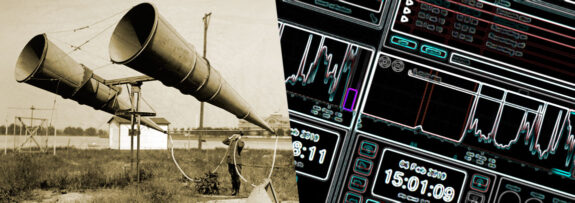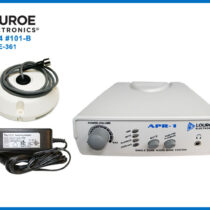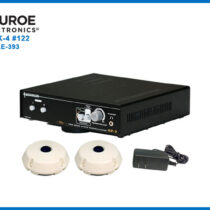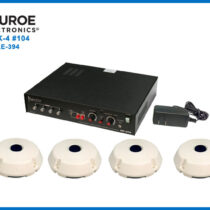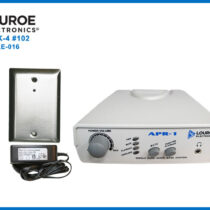CEDAR Trinity is a suite of products designed for audio surveillance and related purposes that can perform audio recording, import of existing audio files, playback, speech enhancement, and annotation using a system of metadata notes. Depending upon the variant installed, it can monitor and record live feeds for days, weeks, months or even years, load existing audio files, replay and enhance all or any part of a recording, allow multiple users to access feeds and recordings using a local area network, log and transcribe events of interest while continuing live recording, export audio to .WAV files and audio CDs, and verify the integrity of any CEDAR Trinity project or archive for evidential purposes.
Three variants are available: CEDAR Trinity Recorder, CEDAR Trinity Satellite and CEDAR Trinity Off-line. These can be combined in different ways for various purposes. All three run on standard Windows PCs, laptops and tablets running Windows® 10. A fourth variant – CEDAR Trinity Workstation – includes all the facilities of the Recorder, Satellite and Off-line products.
The Recorder and its Satellites are designed primarily for recording, monitoring, enhancing and transcribing live audio feeds – in other words, performing all the tasks necessary to collect evidence while the event of interest is happening, and to provide immediate intelligence to rapid response teams. The Off-line system, as the name implies, has been designed for performing the same tasks on existing audio files. These can be supplied in a wide range of formats whether they were recorded on CEDAR Trinity or almost any other recording system.
CEDAR Trinity – The Recorder

The heart of a CEDAR Trinity audio acquisition system is its Recorder. You will never see this; it runs as a Windows service which means that it is running in the background whenever the computer or server on which it is loaded is switched on and not asleep. The Recorder will automatically resume recording after a reboot or when you turn the computer on. In principle, it can record unlimited channels of audio as either individual tracks or stereo pairs. Recordings are stored as assets that contain the audio, events (text notes about the audio), and information that allows the audio to be displayed. The Recorder can be accessed from the Admin Program and multiple Satellites, either locally (on the same PC) or remotely (across a network).
Remote recorders
Remote Recorders are required when the user wants to place a Recorder near to the probes but monitor from a remote location. Often, the connection between the recording device and the monitoring position cannot be relied upon, and communication might only be available in short bursts. Provided that the connection is rapid enough, the Recorder at the monitoring station will be able to copy the remote audio in chunks and ‘catch up’ whenever a connection is made.
CEDAR Trinity – Satellite

The Satellite program is the means by which an operator accesses the assets held on a Recorder. Depending upon the permissions granted by the Administrator, a Satellite (whether running on the same PC as the Recorder or remotely via a network) allows the operator to monitor and enhance audio, add events (text notes), as well as export and archive audio. All network communication between CEDAR Trinity systems is encrypted using AES256. The key is a random number unique to each connection session.
There are many occasions when you might want multiple listeners to be able to access the Recorder, perhaps with some people monitoring events as they happen while others inspect past events of interest. That’s no problem at all because every Recorder can host a potentially unlimited number of CEDAR Trinity Satellites.
Since there’s no limit to the number of Satellites that can be connected to a given Recorder, multiple users can address each of the audio streams, whether to monitor the incoming audio and perform real-time speech enhancement, or to listen to and enhance past events for logging and transcription. To the operator, the only difference between a standalone system and a PC running a Satellite is the location of the Recorder – whether it’s local to the computer that the operator is using or accessed across the network. The user interface is otherwise identical.
Sometimes, it will be desirable to allow some operators to work on particular live streams or assets, while other operators will have access to different streams and assets. Again, this is no problem. The system administrator can decide which operators have access to which assets so that multiple teams can work on within a single system.
In addition, transcription can be aided by the use of a suitable USB footpedal, which can control facilities such as play/pause, fast forward and fast rewind or slow playback to leave your hands free for typing.
It’s fast, efficient, and very flexible.
CEDAR Trinity Off-line

An Off-line system is visually similar to a Satellite but is not able to connect to a Recorder. Instead, it can load existing audio files.
Once loaded into the Off-line system, the audio can be inspected, enhanced and transcribed using all the usual CEDAR Trinity tools, including the noise reduction and speech enhancement filters. Transcription can be aided by the use of a suitable USB footpedal, which can control facilities such as play/pause, fast forward and fast rewind or slow playback to leave your hands free for typing.
CEDAR Trinity Off-line systems will load audio files in all the common audio formats, as well as the time-stamped audio from Panoptech, Vortex, and WireOnAir recorders.
Major features
| Recorder | Satellite | Off-line | Workstation (Recorder + Satellite + Off-line) |
|
| Record unlimited channels | ✅ | ✅ | ||
| Connect to Recorder | ✅ | ✅ | ✅ | |
| Connect to Remote Recorders | ✅ | ✅ | ||
| Support CEDAR Trinity Satellites | ✅ | ✅ | ||
| Monitor live audio | ✅ | ✅ | ||
| Load existing audio files | ✅ | ✅ | ||
| Enhance live audio | ✅ | ✅ | ||
| Enhance existing audio files | ✅ | ✅ | ||
| Add metadata notes and transcriptions | ✅ | ✅ | ✅ | |
| Export audio | ✅ | ✅ | ✅ | |
| Archive audio | ✅ | ✅ |
CEDAR Trinity offers four powerful processes that suppress unwanted noise and enhance the wanted speech. These are based on flaghip processes such as our adaptive filters and FNR. They provide deceptively powerful and effective speech enhancement with the minimum of controls so that all users – novices and experts alike – can increase the intelligibility of audio collected from difficult environments.
The event log is a list of system events (such as record starts and stops) and user events (which can include information about the recording, the location, and the speakers, as well as a full transcription of the speech). Every user’s ID is added invisibly to events, and the speech enhancement parameters are embedded as metadata in exports. For security and verification purposes, these allow investigators to know with even greater precision who did what, and when.
Archiving frees up disk space, even while the recording is progressing. This means that, in principle, a recording can continue indefinitely. Then, if you wish to restore the archived audio, it can be inserted seamlessly at its original position, allowing teams to revisit audio material at any time in the future. Archived audio can also be used to create new audio assets should this be required.
To comply with the law in a number of jurisdictions, CEDAR Trinity can erase audio from assets, although only under strict conditions, and with the system reporting that this has been done. Of course, this feature can also be precluded for use in countries where erasure is not allowed. Likewise, we have added a switch that allows incoming audio to be monitored when no recording is taking place or (for use in jurisdictions where this is not allowed) that mutes the feed unless recording is taking place.
For evidential purposes, CEDAR Trinity offers a separate verification utility that can check the integrity of any project or archive. Exports as well as assets and archives are now cryptographically signed so that users can use the TVerify utility to see whether anyone has tampered with the audio, whether held in assets, in exports of specific portions of the audio (say, for evidential purposes), or in archives. If no evidence of tampering is found, the information contained with the audio can then be used with confidence.
Dante®
The CEDAR Trinity recorder is now Dante® compatible through the use of the Dante Virtual Soundcard. Its ability to transfer many channels of audio from input devices to the recorder using standard networks rather than large numbers of audio cables makes it easier and more cost effective to create larger CEDAR Trinity installations. Such systems are more robust than tradition audio cabling and can be used over much greater distances. This makes them particularly useful in environments such as central monitoring posts.

